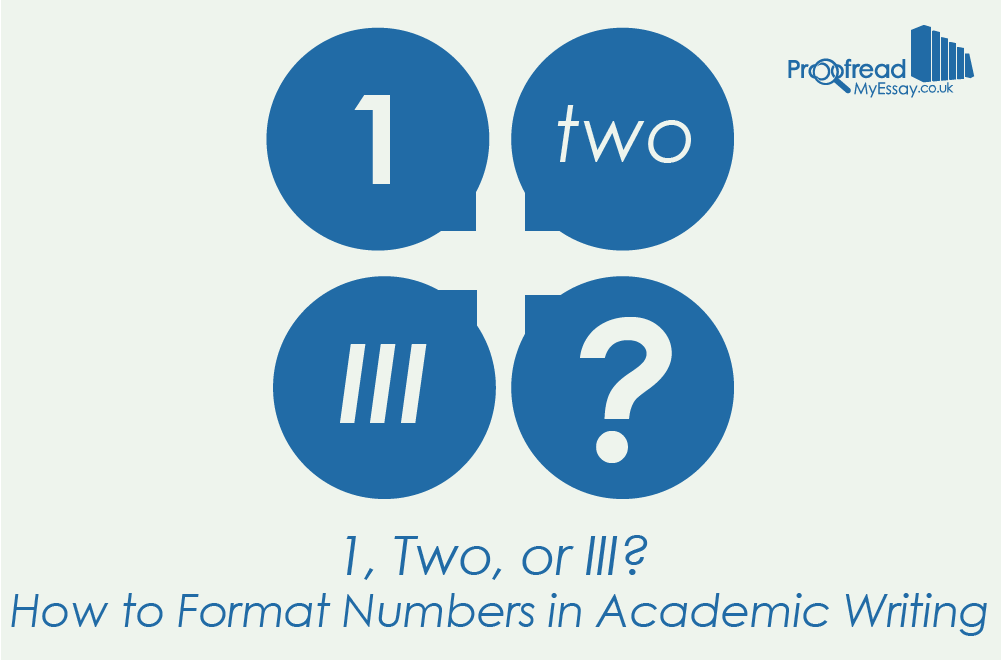Whether it’s dates, survey results or statistical data, numbers and numerals play an important role in every field of academic writing. However, the best way to format numbers in academic writing is a contentious matter.
Words or Numerals?
One prominent issue is whether numbers should be written using words (e.g. one, two, three) or Arabic numerals (e.g. 1, 2, 3). Generally, the rule here is to write out numbers up to nine and use numerals for larger values.
Nevertheless, different systems have different rules; for instance, while APA recommends using numerals for ten and up (or ‘10 and up’, if you prefer), the Chicago Manual of Style suggests spelling out all numbers up to one hundred (or 100).
There are other exceptions too, since very big numbers may require a combination of words and numerals, particularly if they’re more than three words long (e.g. ‘4.5 billion’ is clearer and more concise than ‘four and a half billion’).
Another good guideline is to always spell out numbers at the start of a sentence unless they’re a decimal or a date.
Tips on Punctuation
The main things to keep in mind here are commas and hyphens. Commas are often used to separate thousands in large numbers:
One hundred thousand = 100,000
Two million = 2,000,000
Using commas isn’t compulsory, but make sure to apply a consistent style throughout your work.
Find this useful?
Subscribe to our newsletter and get writing tips from our editors straight to your inbox.
In addition, you should hyphenate numbers when they contain more than one word (e.g. 42 = forty-two) or when they’re part of an adjectival phrase (e.g. ‘the seven-year itch’).
Dates, Years and Centuries
Years (e.g. 2012, 45-12 BCE) are almost always written using numerals, though dates can be presented either numerically (e.g. 03/02/16) or written out in full (3rd February, 2016).
For the most part, it’s better to write out months as a word if a date appears in the main text of your essay. Likewise, you should always write out centuries in full in academic texts (i.e. ‘nineteenth century’, not ‘19th century’).
When in Rome…
It’s helpful to familiarise yourself with the basics of Roman numerals. You won’t need them too often, but they are still used for things like the pre-body material in longer essays (e.g. contents pages), the titles of monarchs (e.g. Phillip III) and film credits (e.g. MCMLXVIII = 1986).
Technical Numbers
In technical writing, especially in the sciences and mathematics, it’s generally better to present numbers as numerals, particularly when dealing with decimals, percentages and fractions.
Furthermore, numerals are often preferable when a number is followed by a unit of measurement (e.g., ‘six centimetres’ can also be written as ‘6 cm’).
Again, however, the most important things are clarity and consistency, so the style you choose to adopt may depend on what you’re trying to communicate.
